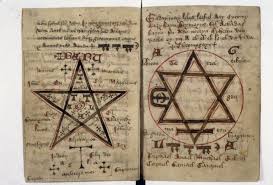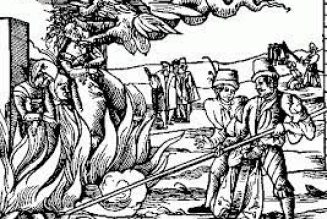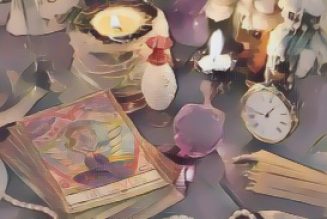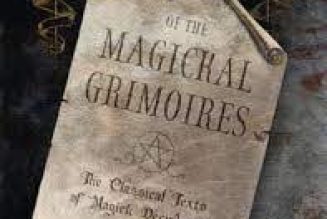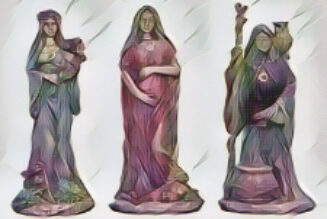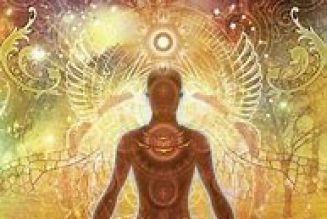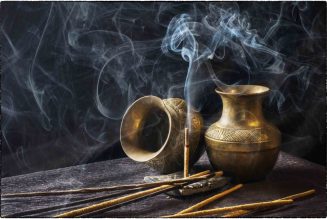THE WORD GEOMANCY (from the Latin geo,
‘Earth’, mancy ‘prophecy’) had a different
meaning in ancient times from that it has
today and we shall deal with that aspect first. It
was a method of divination used to interpret
markings on the ground or how handfuls of dirt
landed when you tossed them, and was therefore
the reading of patterns or signs. Geomancy
seems to have appeared as a word in the
language used by the common people in 1362,
and was one of the most popular forms of
divination throughout the Middle Ages. It was
apparently suggested to the Pope of the time that
it should be integrated into Catholic teachings.
In this form geomancy was – and indeed still
is – a practice which involved marking sixteen
lines of dashes either in sand or soil with a
wand, or, as practised nowadays, on a sheet of
paper with a pencil. This is similar to other
divinatory methods. The English version of
geomancy involved grouping the marks on the
ground into ‘constellations’ with names like Via
and Puer, which could then be interpreted.
Once used by commoners and rulers alike, it
was probably the basis for the Oraculum said to
have been used by Napoleon Bonaparte. This
was also known as the Sibylline Leaves, and
consisted of a set of instructions, which show
the user how to reduce their question to a set of
asterisks laid out in various patterns. The
answer is divined from these patterns.
Today there are those who have redefined
geomancy and taken it away from divination to
a point where human consciousness meets,
understands and appreciates the energies of the
earth. By understanding the interaction
between humankind and the earth on which
we live, it enables us to live harmoniously with
Gaia (Mother Nature) as a complex entity
involving the earth’s biosphere, atmosphere,
oceans and soil.
Geomancy is actually the practice of
identifying the subtle energies of the earth that
directly affect our health and well-being. It
involves pinpointing those energies that are
disruptive to our lives and balancing them. It
encompasses, as knowledge spreads, the art of
the proper placement of both public and
spiritual structures, places where we pray, work,
play and live. Now, geomancers can find and
shape spaces in harmony with both the physical
and the spiritual environment of a place. We can
do this through Western knowledge of Sacred
Geometry or through the Chinese art of Feng
Shui (literally meaning ‘wind and water’).
